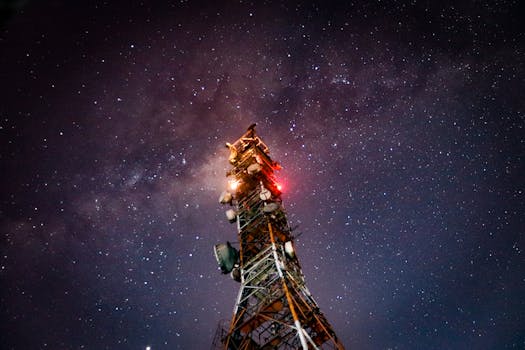
MEO Satellites: Revolutionizing Global Connectivity with Medium Earth Orbit Technology
MEO satellites, or Medium Earth Orbit satellites, are a type of satellite that operates at an altitude of approximately 2,000 to 36,000 kilometers above the Earth’s surface. This orbit is significantly lower than the Geostationary Orbit (GEO) used by traditional satellites, which are stationed at an altitude of around 36,000 kilometers. The lower orbit of MEO satellites provides several advantages, including faster signal transmission, lower latency, and more reliable connections.
MEO satellites are designed to provide global coverage, with a single satellite able to cover a significant portion of the Earth’s surface. This makes them ideal for applications such as satellite communication, navigation, and Earth observation. The use of MEO satellites is becoming increasingly popular, with many companies and organizations launching their own constellations of MEO satellites to provide a range of services.
How MEO Satellites Work
MEO satellites operate by transmitting and receiving signals to and from Earth-based stations. The signals are transmitted through a network of ground stations, which are connected to the satellite via a radio link. The satellite then relays the signals to other parts of the world, allowing for global communication and connectivity. MEO satellites use a variety of frequencies, including Ka-band, Ku-band, and C-band, to transmit and receive signals.
The lower orbit of MEO satellites also allows for the use of smaller and more efficient antennas, which can be mounted on smaller and more fuel-efficient satellites. This makes MEO satellites more cost-effective and environmentally friendly than traditional GEO satellites. Additionally, the lower orbit of MEO satellites reduces the risk of space debris and interference from other satellites.
Advantages of MEO Satellites
MEO satellites offer several advantages over traditional GEO satellites, including faster signal transmission, lower latency, and more reliable connections. The lower orbit of MEO satellites also allows for the use of smaller and more efficient antennas, which can be mounted on smaller and more fuel-efficient satellites. This makes MEO satellites more cost-effective and environmentally friendly than traditional GEO satellites.
MEO satellites are also more resistant to interference from other satellites and space debris, which can cause signal loss and disruption. The use of MEO satellites also allows for more flexible and dynamic network configurations, which can be easily reconfigured to meet changing user demands.
Applications of MEO Satellites
MEO satellites have a wide range of applications, including satellite communication, navigation, and Earth observation. They are used by governments, organizations, and companies to provide global connectivity, communication, and navigation services. MEO satellites are also used for remote sensing, weather forecasting, and disaster response.
The use of MEO satellites is becoming increasingly popular, with many companies and organizations launching their own constellations of MEO satellites to provide a range of services. For example, the O3b Networks constellation, which consists of 20 MEO satellites, provides high-speed internet connectivity to remote and underserved communities around the world.
Conclusion
In conclusion, MEO satellites are revolutionizing global connectivity with their faster and more reliable connections, lower latency, and more efficient use of resources. The use of MEO satellites is becoming increasingly popular, with many companies and organizations launching their own constellations of MEO satellites to provide a range of services. As the demand for global connectivity and communication continues to grow, the importance of MEO satellites will only continue to increase.